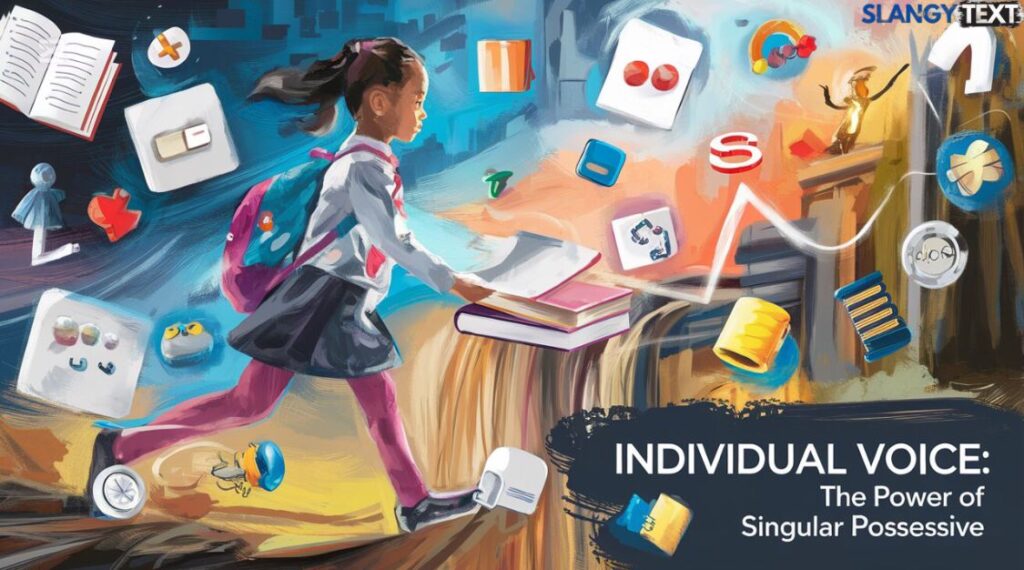Linguistic Foundations of Grammatical Forms
Language is a delicate tapestry of communication, where every punctuation mark and grammatical nuance carries profound meaning. The words “girl’s,” “girls’,” and “girls” might appear similar, but they represent complex grammatical concepts that challenge even experienced writers.
The Essence of Grammatical Precision
Mastering these grammatical forms is crucial for clear and professional communication. Each variation tells a unique story of ownership, plurality, and linguistic structure.
Decoding Singular Possessive Complexity

Ownership in Singular Context
When discussing singular possessive forms, we explore how one individual girl demonstrates ownership. The strategic placement of the apostrophe reveals intricate grammatical relationships.
Scenario Example 1 (School Communication):
Subject: Project Assignment Update
Dear Mr. Henderson,
Emma’s research project demonstrates exceptional analytical skills and innovative thinking.
Best regards, Dr. Rachel Thompson
Scenario Example 2 (Personal Correspondence):
“The girl’s determination shines through her remarkable academic achievements,” noted the school counselor.
Navigating Plural Non-Possessive Representation

Multiple Individuals, No Ownership
The term “girls” represents multiple female individuals without indicating possession. This plural non-possessive form simply describes a collective group.
Scenario Example 1 (Team Meeting Transcript):
“The girls from our marketing department will lead the upcoming presentation,” remarked Michael during the strategy session.
Scenario Example 2 (Professional Communication):
Subject: Summer Internship Program
Selected girls have demonstrated exceptional potential in our competitive recruitment process.
Exploring Plural Possessive Dimensions
Collective Ownership Dynamics
Plural possessive form emerges when multiple girls collectively own something. The strategic apostrophe placement indicates shared ownership.
Scenario Example 1 (Academic Newsletter):
The girls’ innovative research secured top honors in the regional science competition.
Scenario Example 2 (Team Achievement):
Celebrating the girls’ remarkable collaborative achievements in technological innovation.
Grammatical Precision in Context
Punctuation as a Communication Tool
Understanding apostrophe placement transforms communication. Singular possessive uses girl’s, while plural possessive uses girls’, each dramatically altering meaning and ownership representation.
Must Visit : 25 Ways To Say “Thank You For The Good News” In An Email (2024)
Possession and Grammar Practice Table
| Name | Singular Form | Singular Possessive | Plural Form | Plural Possessive |
|---|---|---|---|---|
| Emma | girl | Emma’s notebook | girls | Emma’s and Sarah’s project |
| Sarah | girl | Sarah’s book | girls | girls’ achievements |
| Jessica | girl | Jessica’s research | girls | girls’ collaboration |
| Rachel | girl | Rachel’s presentation | girls | girls’ team spirit |
| Emily | girl | Emily’s dream | girls | girls’ collective goal |
| Olivia | girl | Olivia’s invention | girls | girls’ innovative approach |
| Sophia | girl | Sophia’s perspective | girls | girls’ shared vision |
| Isabella | girl | Isabella’s strategy | girls | girls’ remarkable success |
| Ava | girl | Ava’s contribution | girls | girls’ leadership |
| Mia | girl | Mia’s initiative | girls | girls’ empowerment |
Linguistic Evolution and Cultural Implications
Grammar Beyond Rules
Language continuously transforms, reflecting societal changes. These grammatical forms represent more than technical regulations—they embody communication’s dynamic nature.
Advanced Grammatical Exploration
Nuanced Linguistic Structures
Advanced language learners recognize that true mastery involves continuous learning and understanding subtle grammatical variations.
Comparative Grammar Analysis Table
| Scenario | Correct Form | Explanation | Context |
|---|---|---|---|
| One girl’s achievement | girl’s | Singular possessive | Individual accomplishment |
| Multiple girls owning books | girls’ | Plural possessive | Collective ownership |
| Describing female group | girls | Plural non-possessive | Group representation |
| Emily’s unique perspective | girl’s | Singular possessive | Personal insight |
| Team’s collaborative effort | girls’ | Plural possessive | Group achievement |
| Discussing female individuals | girls | Plural non-possessive | Multiple persons |
| Sophia’s innovative idea | girl’s | Singular possessive | Individual contribution |
| Group’s shared project | girls’ | Plural possessive | Collective work |
| Female group description | girls | Plural non-possessive | Collective noun |
| Individual girl’s contribution | girl’s | Singular possessive | Personal achievement |
Technology and Language Learning
Digital Grammar Evolution
Modern technological platforms offer unprecedented language learning resources, making grammatical education more interactive and accessible.
You Might Also Like : 20 Professional Ways To Say “It Was A Pleasure Meeting You”
Psychological Aspects of Language Mastery
Overcoming Grammatical Anxiety
Many individuals experience anxiety when confronting grammatical complexities. Understanding linguistic structures helps mitigate these concerns.
Interactive Learning Techniques
Engaging Grammatical Practice
Developing communication skills requires interactive, engaging approaches that transform grammatical concepts into memorable experiences.
Professional Communication Considerations
Precision in Writing
Professional communication demands grammatical precision. Understanding these forms ensures clear, accurate expression across academic, business, and creative domains.
Global Linguistic Perspectives
Cross-Cultural Communication
While focusing on English grammar, different languages handle possessive forms uniquely, highlighting linguistic diversity.
Also Like To Know This : What Is The Collective Nouns For Mountains?
Future of Language Communication
Evolving Grammatical Conventions
Language continually transforms, with grammatical rules adapting to technological and societal changes.
Educational Resources and Continued Learning
Expanding Linguistic Knowledge
Continuous learning and practice are essential for improving language comprehension. Numerous online platforms offer interactive exercises to refine grammatical skills.
Conclusion: Embracing Linguistic Nuance

Mastering “girl’s,” “girls’,” and “girls” represents more than memorizing rules—it’s about understanding communication’s intricate art. Each grammatical form carries a unique story, waiting to be expressed with precision and clarity.
By embracing these grammatical nuances, writers and communicators can express themselves with remarkable linguistic sophistication.
Must Explore : 23 Professional Ways To Say “Thank You For Your Cooperation”

Kayla Rogers is a writer at Slangy Text who loves exploring modern acronyms & slangs and how they shapes our conversations. She enjoys sharing fun and interesting articles that connect with readers. When she’s not writing, Kayla likes to keep up with the latest trends or relax with a good book.







